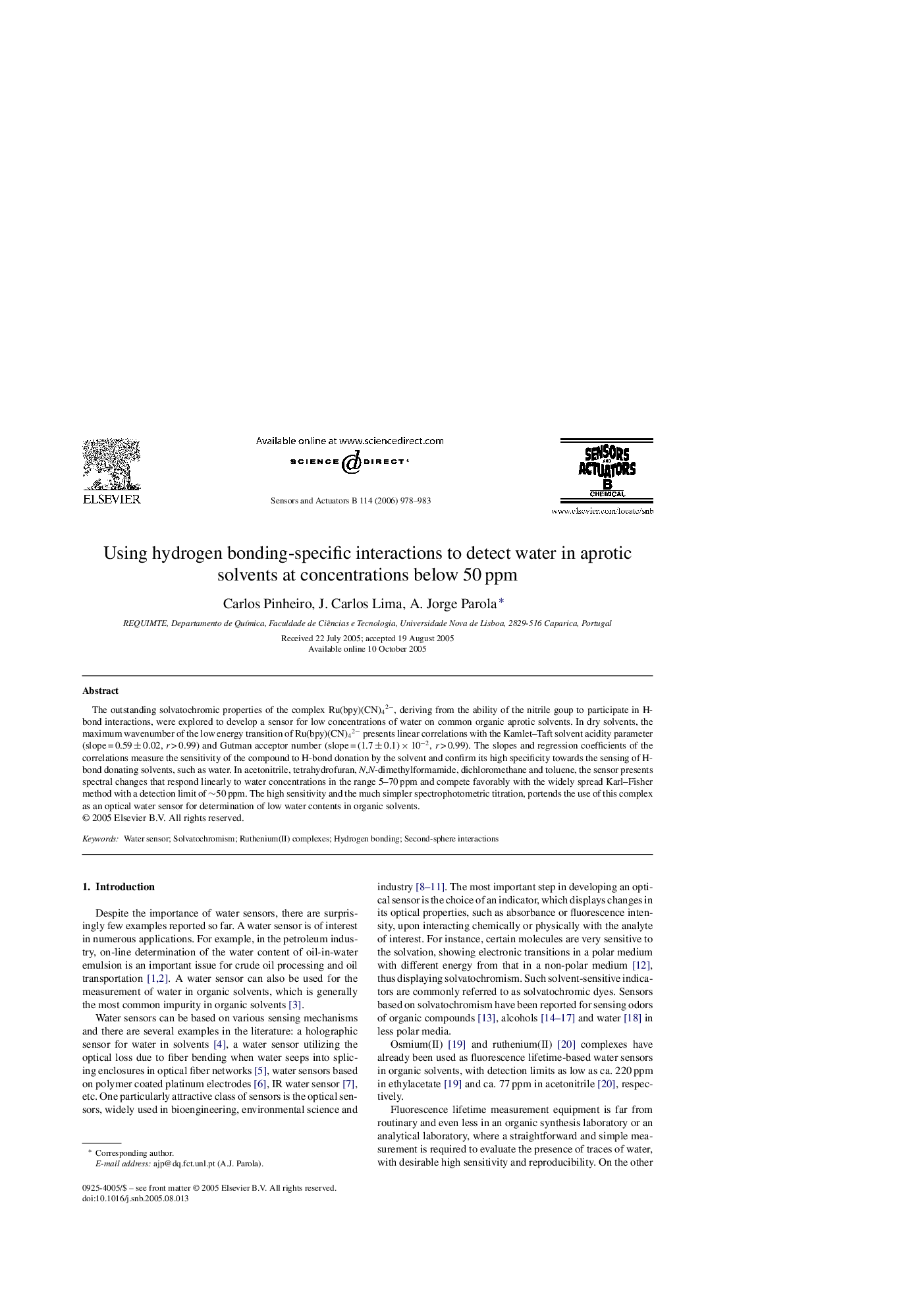| Article ID | Journal | Published Year | Pages | File Type |
|---|---|---|---|---|
| 747410 | Sensors and Actuators B: Chemical | 2006 | 6 Pages |
The outstanding solvatochromic properties of the complex Ru(bpy)(CN)42−, deriving from the ability of the nitrile goup to participate in H-bond interactions, were explored to develop a sensor for low concentrations of water on common organic aprotic solvents. In dry solvents, the maximum wavenumber of the low energy transition of Ru(bpy)(CN)42− presents linear correlations with the Kamlet–Taft solvent acidity parameter (slope = 0.59 ± 0.02, r > 0.99) and Gutman acceptor number (slope = (1.7 ± 0.1) × 10−2, r > 0.99). The slopes and regression coefficients of the correlations measure the sensitivity of the compound to H-bond donation by the solvent and confirm its high specificity towards the sensing of H-bond donating solvents, such as water. In acetonitrile, tetrahydrofuran, N,N-dimethylformamide, dichloromethane and toluene, the sensor presents spectral changes that respond linearly to water concentrations in the range 5–70 ppm and compete favorably with the widely spread Karl–Fisher method with a detection limit of ∼50 ppm. The high sensitivity and the much simpler spectrophotometric titration, portends the use of this complex as an optical water sensor for determination of low water contents in organic solvents.
